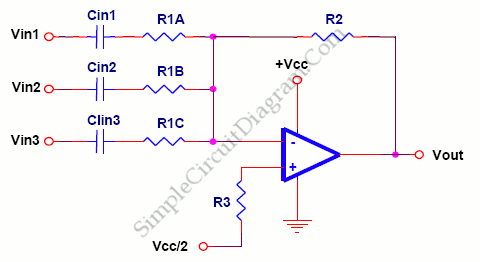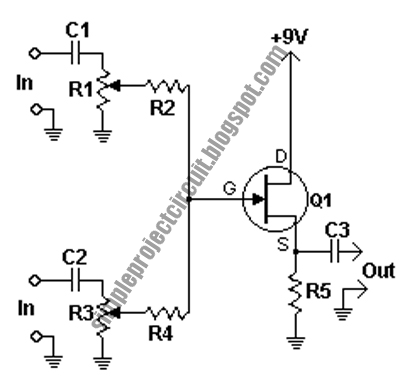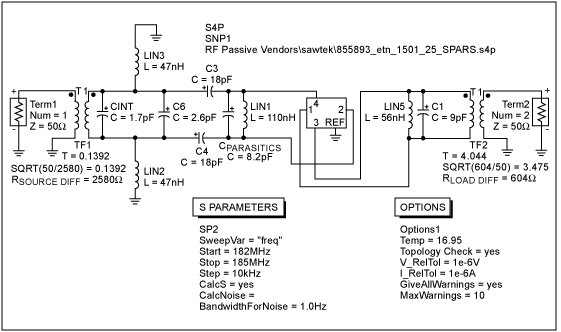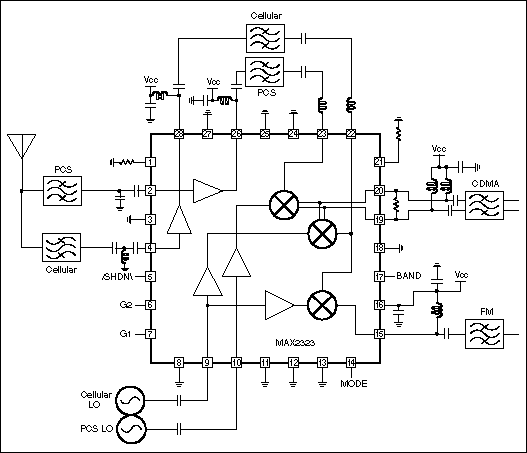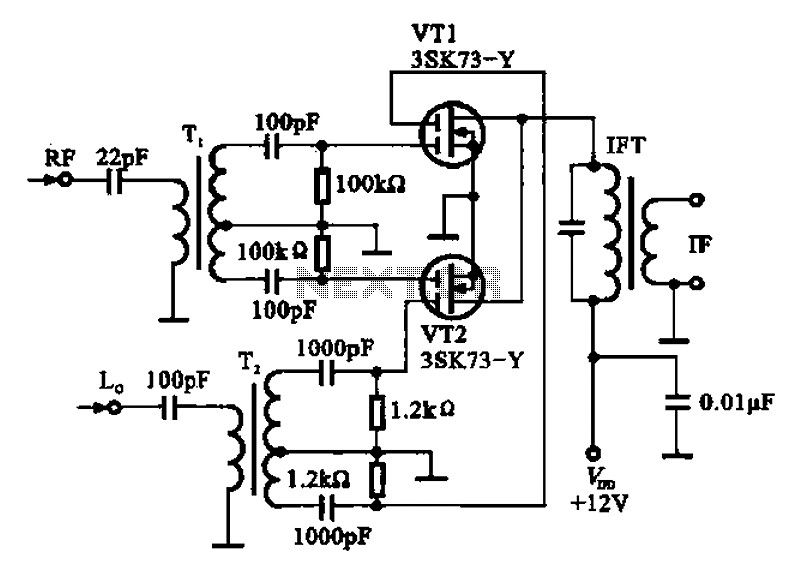
Mixer Diplexer
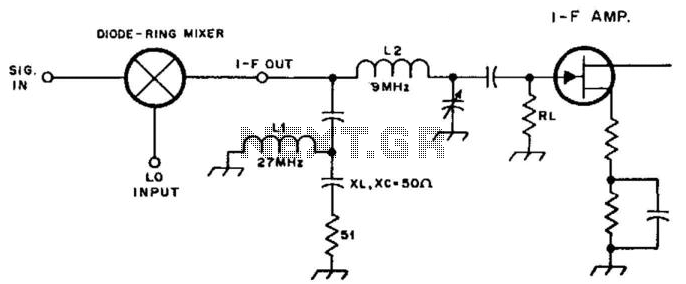
By inserting a high-pass filter section in the intermediate frequency (IF) lead, this mixer is terminated at all frequencies except for the IF, which results in improved intermodulation distortion (IMD) for other mixer products. In this example, the high-pass filter section L1 and capacitors cut off frequencies below 28 MHz. Above this frequency, the mixer is effectively terminated.
The described circuit utilizes a high-pass filter to enhance the performance of a mixer by mitigating intermodulation distortion (IMD). The implementation of the high-pass filter in the IF lead serves to block lower frequency signals while allowing higher frequency signals to pass through. This selective filtering is achieved through the use of an inductor (L1) and capacitors arranged in a configuration that establishes a cutoff frequency at 28 MHz.
In the schematic, the inductor L1 is connected in series with the IF lead, while capacitors are connected to ground. This configuration creates a high-pass filter that ensures signals below 28 MHz are attenuated. The choice of components, particularly the values of L1 and the capacitors, should be selected based on the desired cutoff frequency and the specific impedance of the mixer circuit to ensure optimal performance.
The termination of the mixer at frequencies above the cutoff is crucial as it minimizes reflections and ensures that the mixer operates efficiently within its intended frequency range. This design approach not only enhances the linearity of the mixer but also improves overall signal integrity, making it suitable for high-performance applications in communication systems where clarity and precision are paramount.
In summary, the integration of a high-pass filter in the IF lead of a mixer circuit significantly contributes to reducing unwanted distortion and optimizing the mixer’s performance across its operational frequency range. By inserting a high-pass filter section in the IF lead, this mixer is terminated at all frequencies, besides the IF, for oth er mixer products, which results in improved IMD. In this example, high-pass filter section Ll and capacitors cut off below 28 MHz. Above this frequency, the mixer is terminated.
The described circuit utilizes a high-pass filter to enhance the performance of a mixer by mitigating intermodulation distortion (IMD). The implementation of the high-pass filter in the IF lead serves to block lower frequency signals while allowing higher frequency signals to pass through. This selective filtering is achieved through the use of an inductor (L1) and capacitors arranged in a configuration that establishes a cutoff frequency at 28 MHz.
In the schematic, the inductor L1 is connected in series with the IF lead, while capacitors are connected to ground. This configuration creates a high-pass filter that ensures signals below 28 MHz are attenuated. The choice of components, particularly the values of L1 and the capacitors, should be selected based on the desired cutoff frequency and the specific impedance of the mixer circuit to ensure optimal performance.
The termination of the mixer at frequencies above the cutoff is crucial as it minimizes reflections and ensures that the mixer operates efficiently within its intended frequency range. This design approach not only enhances the linearity of the mixer but also improves overall signal integrity, making it suitable for high-performance applications in communication systems where clarity and precision are paramount.
In summary, the integration of a high-pass filter in the IF lead of a mixer circuit significantly contributes to reducing unwanted distortion and optimizing the mixer’s performance across its operational frequency range. By inserting a high-pass filter section in the IF lead, this mixer is terminated at all frequencies, besides the IF, for oth er mixer products, which results in improved IMD. In this example, high-pass filter section Ll and capacitors cut off below 28 MHz. Above this frequency, the mixer is terminated.
